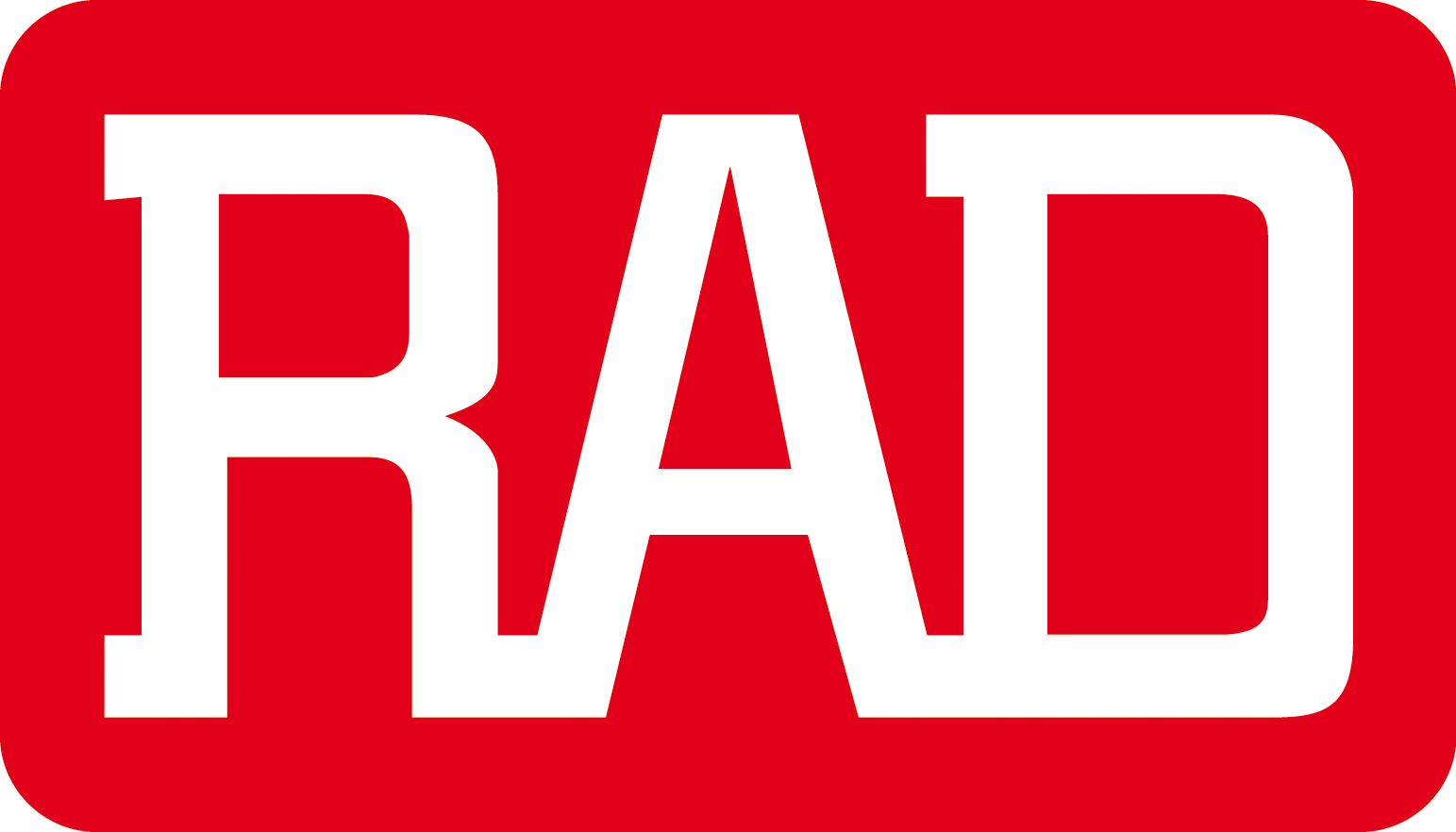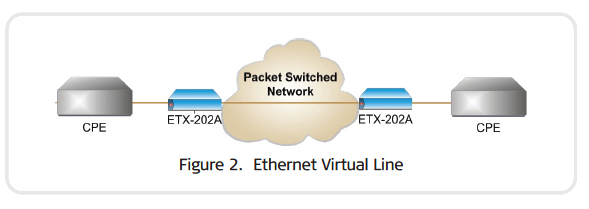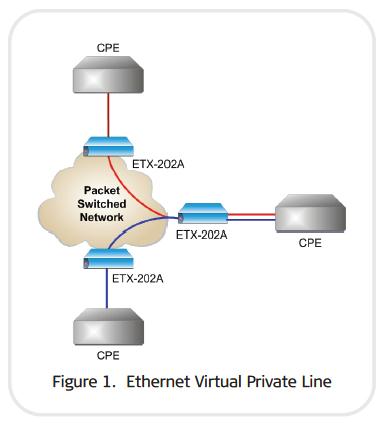




ETX-202A Carrier Ethernet Demarcation Device
ETX-202A Carrier Ethernet Demarcation Device

ETX-202A is a carrier Ethernet demarcation device owned and operated by the service provider and installed at the
customer premises. The device is part of RAD’s EtherAccess® portfolio and features Carrier Ethernet attributes,
including Ethernet OAM for proactive SLA monitoring, quality of service (QoS) per
Ethernet flow, advanced traffic management capabilities, and powerful bandwidth profiles for differentiated
services – all starting at the service handoff points.
ETX-202A is equipped with two Ethernet network ports (copper or SFP-based interfaces), supporting link protection
based on 802.3ad or dual homing for increased service resiliency. The four Ethernet subscriber ports use copper or
SFP-based interfaces. The SFP-based Ethernet ports
accommodate a wide range of Fast Ethernet and Gigabit Ethernet SFP transceivers, allowing service providers to
seamlessly connect customers located at different distances from the device.

RAD
ETX-202A FLEXIBLE TRAFFIC MAPPING
Traffic is mapped to the Ethernet flows (EVCs) using very flexible classification
criteria that can be combined, for example:
• Port-based (All-to-one bundling)
• VLAN + VLAN priority
• VLAN + IP precedence
• VLAN + DSCP
• Ether Type
• Untagged.
More classification criteria and combinations can be found in the user manual.
HIERARCHICAL SCHEDULING AND SHAPING PER FLOW WITH RAD
ETX-202A
Every flow has its own queues and scheduler. ETX-202A supports up to 270 services, and a total of 30 queue
blocks per network port. Each queue block is a group of eight queues per CoS. Each
flow can be bound to each queue block.
ETX-202AQOS
Different service types require different levels of QoS to be provided end-to-end.
QoS can be defined per subscriber as well as per service. QoS has three aspects: rate
limitation, traffic shaping, and traffic prioritization. Traffic policing is applied per flow or group
of flows, and operates according to the dual token bucket mechanism based on user-configurable CIR + CBS and EIR + EBS.
Traffic can be limited to the line rate or the data rate.
For prioritizing user traffic, ETX-202A maps user traffic to eight separate queues. Each can be configured as strict
priority queues or weighted fair queues (WFQ). The queues handle traffic with different service demands, such as
real-time traffic, premium data, or best-effort data. The device uses the WRED policy to
ensure that queues are not congested and high-priority traffic is not dropped.
ETHERNET OAM
Ethernet OAM is one of the important tools that has upgraded Ethernet technology to carrier Ethernet class.
It enables providers to deliver ‘SONET/SDH-like’ quality over packet-switched networks. ETX-202A
implements the full suite of Ethernet OAM standards, which can be monitored by performance monitoring systems such as
RADview or a third-party tool. The RAD
ETX-202A provides these types of
Ethernet OAM:
• Single-segment (link) OAM according to IEEE 802.3-2005 (formerly 802.3ah) for remote management and fault
indication, including remote loopback, dying gasp, and MIB parameter retrieval
• End-to-end connectivity OAM based on IEEE 802.1ag that enables Ethernet service providers to monitor their
services proactively and guarantee that customers receive the contracted SLA
• End-to-end service and performance monitoring based on ITU-T Y.1731. Fault monitoring and end-to-end
performance measurement include frame delay, frame delay variation, frame loss and availability.
NETWORK INTERFACE REDUNDANCYOF RAD
ETX-202A
Two redundancy modes can be applied:
• Link aggregation (LAG) based on 802.3ad
• Dual homing (1:1), allowing ETX-202A to be connected to two different upstream devices.
TYPICAL RAD
ETX-202A APPLICATIONS
ETX-202A is used in the following MEF-defined applications:
• Ethernet Virtual Private Line (EVPL) – Site-to-site connectivity over shared
bandwidth with service multiplexing (see Figure 1)
• Ethernet Private Line (EPL) – Site-to-site connectivity over dedicated bandwidth without service
multiplexing (see Figure 2).
LAYER-2/ LAYER-3 LOOPBACK WITH MAC AND IP ADDRESS SWAPPING
Layer-2 and/or layer-3 network integrity can be tested by a non-disruptive loopback performed per flow, with
swapping of MAC address and optionally IP address. When the loopback is activated, ETX-202A exchanges the source
and destination MAC/IP addresses of the
incoming packets. This loopback passes through Ethernet bridges (MAC address) and routers (IP address).
ETX-202A L2CP HANDLING
ETX-202A can be configured to pass through Layer-2 control frames (including other vendors’ L2CP frames) across the
network, to peer-supported protocols (802.3ah), or to discard the L2CP frames.
FAULT PROPAGATION
The unit provides a user-configurable fault propagation mechanism. When a link failure is detected at the network port,
ETX-202A optionally shuts down a user port until the network link is restored. The
fault propagation mechanism enables routers and switches connected to both ends of the link to reroute the traffic to
the redundancy path.

DYING GASP FEATURE OF RAD
ETX-202A
Units equipped with AC power supply report power failures to defined network management stations by sending traps,
thus enabling the unit to properly disconnect from the network.
MANAGEMENT
The unit can be managed using the following ports and applications:
• Local management via an ASCII terminal connected to the RS-232 port
• Remote inband management via user or network ports routed via separate VLANs, Telnet, or RADview, RAD’s
SNMP-based management system
• Out-of-band management via a dedicated management port.
ETX-202A COMMAND LINE INTERFACE
Databases and scripts of commonly used commands can be easily created and
applied to multiple units using command line interface.
SECURITY
The following security protocols are provided by ETX-202A to ensure client server communication privacy and correct
user authentication:
• SNMPv3
• RADIUS (client authentication only)
• SSH for Secure Shell communication session.
JUMBO FRAMES AND EGRESS MTU
The unit supports large frames of up to 12 Kbytes. The egress MTU can be defined
per port (UNI/NNI). DHCP IP address, IP mask, and default gateway can be automatically obtained using
DHCP.
Key points to remember about the ETX-202A include:
• Carrier Ethernet demarcation device delivering business services over fiber infrastructure
• MEF certified, supporting Ethernet Private Line (EPL) and Ethernet Virtual Private Line (EVPL) services with flexible mapping of user traffic
into Ethernet flows
• Robust bandwidth control mechanism and Service Level Agreement (SLA) monitoring per Ethernet flow starting at customer premises
• Complete Ethernet OAM solution based on IEEE 802.3-2005 (formerly 802.3ah), IEEE 802.1ag, and ITU-T Y.1731 for Opex reductions
• Network link protection based on 802.3ad or dual homing for increased service
resiliency

ETX-202A data sheet pdf